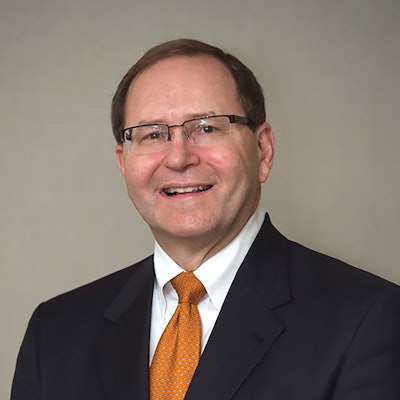Navigating future reform
Our December/January Bulletin gives me a chance to look into the future, while reviewing the last year, to recognize key concerns affecting otolaryngology. Our Annual Report in this issue details the breadth and depth of our programs and business units designed to address Members’ needs.
 James C. Denneny III, MD
James C. Denneny III, MD
AAO-HNS/F EVP/CEO
Our December/January Bulletin gives me a chance to look into the future, while reviewing the last year, to recognize key concerns affecting otolaryngology. Our Annual Report in this issue details the breadth and depth of our programs and business units designed to address Members’ needs.
Most of the critical areas in the evolution of the healthcare system exist on a continuum, but are driven by principles such as quality and value that cross into both the governmental and private arenas. Legislative and regulatory efforts in 2016 further codified this direction, which will be subject to preferences of the new administration. Last year, I highlighted several areas where we anticipated additional clarity would be forthcoming. Let’s take a look at some of these as well as further spheres we are following closely.
The Quality Payment Program
The preliminary rule released by CMS earlier this year described the four basic components of MIPS, Quality (50 percent), Resource Use (10 percent), Advancing Care Information (ACI, 25 percent), and Clinical Practice Improvement Activity (CPIA, 15 percent) as well as Advanced Alternative Payment Models (APMs).
After extensive comments by the Academy and multiple medical organizations advocating for modifications, the final rule was released after the deadline for this column, so my analysis is preliminary. Physicians will be able to participate either through the MIPS or APM programs. Quality reporting through MIPS was to begin January 1, 2017, for payment adjustment in 2019. During a designated “transition” year, CMS will now allow several reporting options including complete yearlong reporting or as little as a limited 90-day reporting period that requires just one quality measure, one activity in the improvement activities performance category, or report the required measures of the ACI performance category to avoid a negative MIPS payment adjustment in 2019. Improvement Activity (formerly CPIA) can be claimed by self-attribution. CMS modified Cost (formerly Resource Use) to count 0 percent the first year, and Quality increased to 60 percent. Advanced APM definitions have also been expanded with the goal of increasing opportunities for more providers.
What we don’t know
Even though CMS has expanded the definition for APMs, it is unclear how specialists, particularly otolaryngologists, will be able to participate in APMs if they are not members of a large organization. We are participating in a project run by the American College of Surgeons and Brandeis University working to identify “episode groupers” that would potentially qualify for APM status. We will search for the best avenue for Members to have the opportunity to participate in APMs, which carry a 5 percent bonus payment.
What we know
The ability to define and measure quality will be a necessity to participate in governmental and private payer plans. The Academy has been planning for this for several years and officially launched RegentSM, our Clinical Data Registry, in October. Our projections were to have 200-300 participants initially, but we have signed up nearly 2,000 participants from all practice types and locations. This, along with the collaboration of our specialty societies and the American Board of Otolaryngology, will enable us to collect data and create meaningful measures more rapidly.
We also continue to develop collaborative relationships with several of the large private insurance companies that will allow direct input relating to our respective areas of clinical expertise as policies are being developed that affect our patients.
What the future holds
An equally critical area for discussion and planning, “what will the practice of otolaryngology be in the future?,” deserves attention as we progress through the pathway of reform. Myriad factors will interact to define the otolaryngology practice of the future. Supply of otolaryngologists, scientific advances, scope of practice adjustments, changes in medical education, utilization of allied health providers, population health management, clinical data defining best patient care, and overall payment reform will all have the potential to significantly alter the way we practice today.
What will we do?
We will continue to work with our specialty societies, the House of Surgery, the House of Medicine, and, most importantly, our Members to proactively prepare for and adapt to future directions in healthcare and the practice of otolaryngology. We will need your help to both guide and inform us as we take a deep look into the future of the way otolaryngologists practice.





